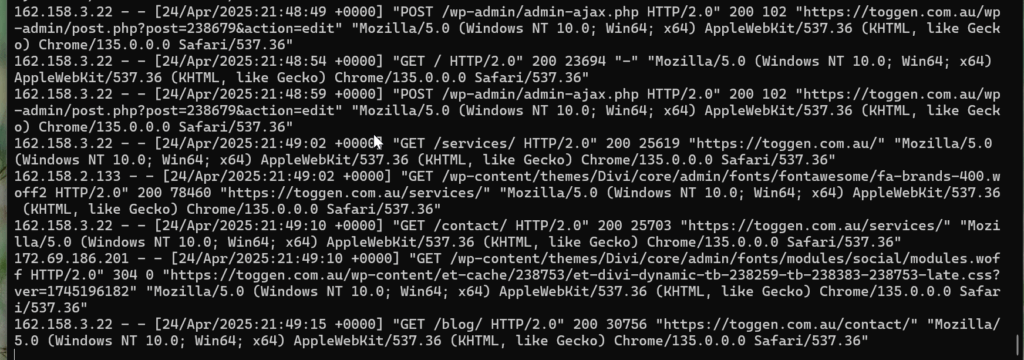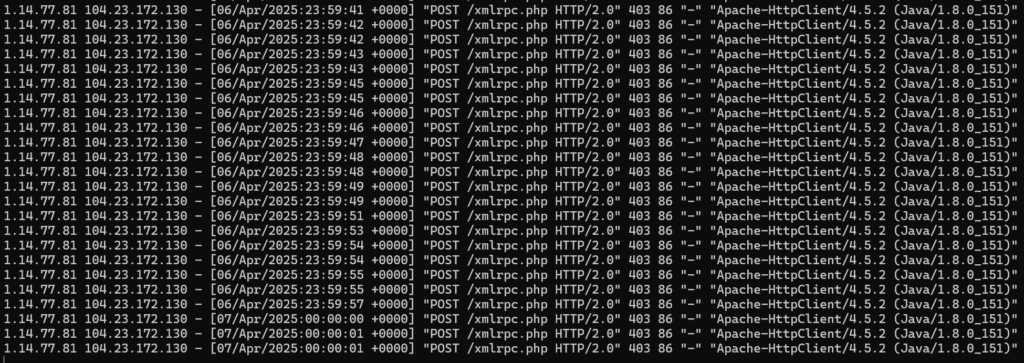When using Cloudflare proxying. By default the nginx logs show the remote_addr (162.158.3.22) as one of the multitudinous Cloudflare proxy server IP addresses:

Following is how you can configure your nginx conf files to return 403 (Forbidden) to specified IP's and Subnets based on the CF-Connecting-IP header that Cloudflare sets with each proxied request
Check your instance of nginx has the geo module

Create a geo block conf file
# /etc/nginx/geo-block.conf
geo $http_cf_connecting_ip $block {
default 0;
# list your IPv4 and IPv6 IPs and subnets you want to block here followed by a 1
154.26.130.54 1;
188.166.220.242 1;
1.14.77.81 1;
134.199.144.0/20 1;
2403:3433:21f:2ad0::/64 1;
2403:3433:21f:2ad0:234::1 1;
}
Matched CF-Connecting-IP header IPs or Subnets set $block to be 1 (true), or 0 (false) by default
In the http context of your nginx config create a new custom log format that includes $http_cf_connecting_ip
# /etc/nginx/nginx.conf
http {
# Custom logging Settings
log_format cloudflareformat '$http_cf_connecting_ip $remote_addr $remote_user [$time_local] '
'"$request" $status $body_bytes_sent '
'"$http_referer" "$http_user_agent"';
# remember to include the geo block conf
include geo-block.conf
Reference the new log format of the site that is proxied by Cloudflare
server {
server_name example.com.au www.example.com.au;
access_log /var/log/nginx/tgn_access.log cloudflareformat;
# lots of other config stuff...
Put in a some logic to return 403 when the connecting IP is matched
In the server context of an nginx site e.g. /etc/nginx/sites-enabled/default.conf add an if statement to return 403 if geo sets $block to 1 (true)
server {
server_name example.com.au www.example.com.au;
access_log /var/log/nginx/tgn_access.log cloudflareformat;
// I put this after server_name before
if ($block) {
return 403;
}
Finally each time you edit the geo-block.conf file to include some new IP addresses to deny.
Check the syntax and run a reload
nginx -t
#output
nginx: the configuration file /etc/nginx/nginx.conf syntax is ok
nginx: configuration file /etc/nginx/nginx.conf test is successful
# finally get nginx to reread its conf files if they have changed
systemctl reload nginx.service
Example of tailed logs showing an automatted attack and a 403 Access denied code being returned based on the value of $http_cf_connecting_ip

As seen from browser

More information on the options available for configuring your webserver to sit behind Cloudflares proxy service:

0 Comments